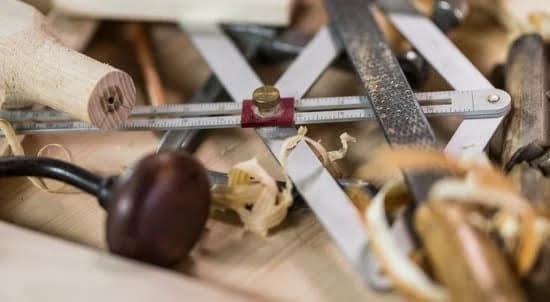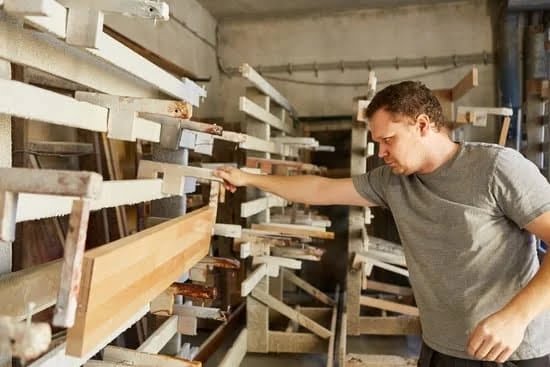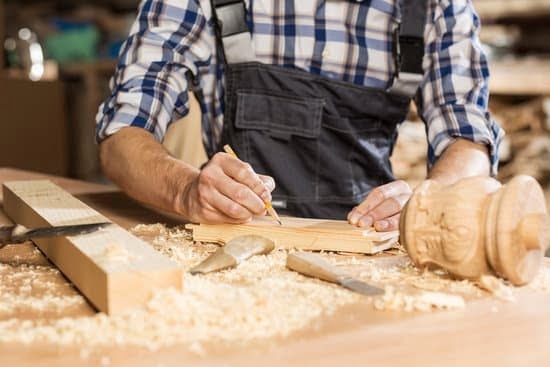Are you interested in learning how to do woodworking without power tools? Traditional woodworking, done entirely by hand, has a unique appeal for many people who enjoy the meditative and tactile experience of working with wood.
In this article, we will explore the benefits of traditional woodworking and provide an overview of the essential tools, techniques, and safety measures needed to work without power tools. Whether you are a beginner or an experienced woodworker looking to explore a new approach, this guide will help you discover the rewarding world of hand tool woodworking.
One of the key benefits of practicing traditional woodworking is the opportunity it provides for a deeper connection to the materials and techniques used in crafting wood projects. Working without power tools allows for more control and precision in shaping and detailing wood, leading to a greater sense of accomplishment and satisfaction in the finished product.
Additionally, traditional woodworking can be more accessible to people who may not have access to or be comfortable using power tools, making it an inclusive and versatile craft.
In the following sections of this article, we will delve into the essential hand tools needed for traditional woodworking, discuss different types of wood suitable for hand tool projects, explain traditional techniques such as joinery and planing, emphasize safety measures when working with hand tools, showcase project ideas that can be completed without power tools, and provide resources for further reading.
Whether you are interested in creating small furniture pieces, wooden toys, or decorative items, this guide will equip you with the knowledge and skills needed to embark on your own hand tool woodworking journey.
Essential Hand Tools
Woodworking without power tools requires a different set of tools compared to modern woodworking methods. These essential hand tools are crucial for achieving precision and detail in traditional woodworking projects.
Hand Saws
One of the most fundamental hand tools for woodworking is the hand saw. Whether it’s a crosscut saw or a rip saw, these tools are indispensable for cutting wood to size and shaping it according to the project’s requirements. A coping saw, back saw, and dovetail saw are also useful additions to a woodworker’s toolkit.
Chisels
Chisels are another essential tool for woodworking without power tools. They allow woodworkers to carve out intricate details, create joints, and shape wood with precision. A set of bevel edge chisels in various sizes is recommended for maximum versatility in woodworking projects.
Hand Planes
Hand planes are used to flatten and smooth surfaces, as well as to shape and finish wooden pieces. They come in various types, such as bench planes, block planes, and shoulder planes, each serving specific purposes in traditional woodworking.
Measuring and Marking Tools
Accurate measurements and markings are vital for achieving well-crafted woodworking projects without power tools. Essential measuring and marking tools include a combination square, marking gauge, sliding bevel gauge, marking knife, and quality layout pencils.
Choosing the Right Wood
When it comes to woodworking without power tools, choosing the right type of wood is crucial for the success of your projects. Each type of wood has its own unique characteristics and suitability for hand tool woodworking. Whether you’re working on small furniture, wooden toys, or decorative items, understanding the different types of wood will help you achieve the best results.
Softwoods
Softwoods such as pine, cedar, and fir are popular choices for hand tool woodworking due to their affordability and availability. These woods are often easier to work with using hand tools because they are less dense than hardwoods. Softwoods are ideal for beginners who are just starting out with traditional woodworking techniques without power tools.
Hardwoods
Hardwoods like oak, maple, and cherry are known for their durability and beautiful grain patterns. While they may be more challenging to work with using only hand tools, the end result is well worth the effort. Hardwood projects can range from intricate furniture pieces to fine carving work, showcasing the versatility of these types of wood in traditional woodworking.
Reclaimed or Salvaged Wood
Another option for hand tool woodworking is using reclaimed or salvaged wood. This eco-friendly approach not only adds a unique character to your projects but also reduces waste by repurposing old materials. Reclaimed wood can come from a variety of sources including old furniture, barns, or shipping pallets. Working with reclaimed wood adds an extra layer of sustainability and creativity to your traditional woodworking endeavours.
Understanding the characteristics and suitability of different types of wood will not only enhance your hand tool woodworking skills but also broaden your creative possibilities in crafting beautiful and functional projects without relying on power tools.
Hand Tool Techniques
Woodworking without power tools may seem daunting at first, but it can be a rewarding and fulfilling endeavor. Traditional woodworking techniques such as joinery, planing, and shaping have been used for centuries and can be mastered with patience and practice.
One of the important aspects of using hand tools for woodworking is understanding the different types of cuts that can be made by hand saws and chisels. Learning how to accurately make these cuts is crucial in producing precise joints and smooth surfaces without the aid of power tools.
When starting out with hand tool woodworking, it’s important to begin with simple projects that allow you to practice various techniques. Joinery, which involves joining two pieces of wood together, is a fundamental skill that can be honed through the construction of basic wooden boxes or small tables.
Planing, the process of shaving thin layers of wood to create a flat surface, is essential in achieving smooth and even finishes on your woodworking projects. Shaping wood traditionally involves the use of hand planes along with chisels to achieve intricate designs and patterns on the wood surface.
| Hand Tool Technique | Description |
|---|---|
| Joinery | Involves creating precise joints with basic hand tools like saws and chisels for connecting wooden parts. |
| Planing | The process where thin layers of wood are shaved off in order to create a flat surface. |
| Shaping | This technique uses hand planes and chisels to create decorative patterns or specific designs on wooden surfaces. |
By mastering traditional woodworking techniques using only hand tools, you not only gain a deeper appreciation for the craft itself but also develop a set of valuable skills that can be applied across various woodworking projects. With time and practice, many find that working with hand tools becomes second nature, allowing them to create beautiful, high-quality pieces without relying on power tools or electricity.
Safety Measures
Woodworking without power tools can be a rewarding and satisfying experience, but it is important to prioritize safety when working with hand tools. Without the noise and speed of power tools, it’s easy to overlook the potential dangers of manual woodworking. Here are some tips and guidelines for preventing accidents and injuries while practicing traditional woodworking techniques:
- Wear appropriate safety gear: Always wear protective eyewear, ear protection, and a dust mask when working with hand tools. Gloves can also provide extra protection against splinters and sharp edges.
- Keep your workspace organized: A cluttered work area can increase the risk of accidents. Make sure your tools are stored properly when not in use, and keep your workbench clear of unnecessary items.
- Use sharp tools: Sharp hand tools are safer to use because they require less force to operate. Keep your chisels, planes, and saws well-maintained and sharpened for optimal performance.
It’s also essential to familiarize yourself with proper technique for each hand tool to minimize the risk of injury. For example, when using a chisel, always make sure that your other hand is out of the path of the chisel blade to avoid accidental cuts. When sawing, establish a stable stance and maintain control over the saw throughout the entire cut.
Lastly, take breaks as needed to prevent fatigue and maintain focus on your project. Woodworking requires concentration and precision, so it’s important not to rush through any task. By following these safety measures and guidelines, you can enjoy the satisfaction of woodworking without power tools while minimizing the risk of accidents or injuries.
Types of Projects
Woodworking without power tools opens up a world of possibilities for creating beautiful and functional items using traditional techniques. Whether you’re a seasoned woodworker or just starting out, there are numerous projects that can be completed using only hand tools. Below are some examples of woodworking projects that can be accomplished without the need for power tools:
1. Small Furniture: Crafting small furniture pieces such as end tables, stools, or shelves is entirely achievable with hand tools. Hand saws can be used to cut and shape the wood, while chisels and hand planes can be utilized for joinery and smoothing surfaces. With patience and precision, intricate designs and details can be achieved without the noise and dust of power tools.
2. Wooden Toys: Creating handmade wooden toys is not only a rewarding endeavor but also provides a safe alternative to plastic toys. Simple toys like cars, blocks, or puzzles can be made using basic hand tools. Hand planes can help create smooth edges and curves, while measuring and marking tools ensure accuracy in shaping the toy components.
3. Decorative Items: From picture frames to wooden bowls, decorative items offer ample opportunities for woodworking without power tools. Carving designs into wood using chisels or creating intricate patterns with hand saws allows for the expression of creativity and craftsmanship in these smaller-scale projects.
Keep in mind that when working on woodworking projects without power tools, patience, precision, and attention to detail are key to achieving professional results. By embracing traditional techniques and utilizing basic hand tools effectively, a wide range of impressive woodworking projects can be successfully completed.
Finishing and Detailing
When it comes to woodworking without power tools, achieving a professional finish is essential for showcasing the beauty and craftsmanship of hand-crafted projects. One effective way to achieve this is through traditional hand-sanding techniques. By using sandpaper with varying grits, woodworkers can smooth out imperfections, remove tool marks, and prepare the surface for finishing. Additionally, using hand planes and scrapers can help in leveling and smoothing the wood before the final sanding process.
Another important aspect of achieving a professional finish without relying on power tools is through careful attention to detail and hand-applied finishes. Applying traditional oils, waxes, or shellacs by hand can result in a beautiful and authentic look that enhances the natural characteristics of the wood.
Using simple application techniques such as rubbing with a cloth or applying thin layers with a brush can create stunning results. This approach not only adds aesthetic value but also allows woodworkers to customize their finishes according to their preferences.
To further enhance the appearance of hand-crafted woodworking projects without relying on power tools, incorporating decorative details such as carving, inlay, or wood burning can add unique character and visual interest. These techniques can be achieved using basic hand tools such as chisels or gouges along with careful precision and creativity.
| Woodworking Technique | Description |
|---|---|
| Hand Sanding | Using sandpaper of varying grits to smooth out imperfections and prepare surfaces for finishing. |
| Hand-Applied Finishes | Applying traditional oils, waxes, or shellacs by hand to enhance the natural beauty of wood. |
| Decorative Details | Incorporating techniques such as carving, inlay, or wood burning for unique visual interest. |
Resources and Further Reading
In conclusion, traditional woodworking without power tools offers a return to the roots of craftsmanship and provides numerous benefits such as a quieter and more meditative work environment, as well as the satisfaction of creating objects through physical labor. By embracing essential hand tools such as saws, chisels, planes, and measuring tools, woodworkers can develop their skills and create high-quality pieces.
Additionally, choosing the right type of wood is crucial for hand tool woodworking, and understanding the characteristics of different woods can greatly enhance the outcome of a project.
Furthermore, mastering traditional woodworking techniques like joinery, planing, shaping, and detailing requires practice and dedication. It is important to prioritize safety when working with hand tools and to follow proper guidelines to prevent accidents or injuries. Aspiring woodworkers can explore a variety of projects that can be completed without power tools-ranging from small furniture to wooden toys-which allows for creativity and experimentation.
For those interested in delving deeper into traditional woodworking without power tools, there is an abundance of resources available. Books, online resources, and forums provide valuable information and guidance for honing woodworking skills.
By tapping into these resources and seeking inspiration from experienced woodworkers, individuals can continue to refine their techniques and expand their knowledge in this rewarding craft. Whether it’s through hands-on experience or learning from seasoned experts, traditional woodworking without power tools offers a rich avenue for personal growth and creativity.
Frequently Asked Questions
Can You Build Furniture Without Power Tools?
Yes, it is possible to build furniture without power tools. Many skilled woodworkers have been constructing furniture using hand tools for centuries. While it may require more time and effort, it is definitely doable to create beautiful and functional pieces without the use of power tools.
Do You Need Power Tools for Woodworking?
Power tools can certainly make woodworking projects easier and more efficient, but they are not always necessary. Many woodworking tasks can be accomplished using only hand tools such as saws, chisels, planes, and drills. It really depends on the specific project and the individual’s preference for using power tools or not.
Can You Do Woodworking With Only Hand Tools?
Woodworking with only hand tools is a traditional and time-honored practice that many artisans still prefer today. With a set of high-quality hand tools and proper craftsmanship skills, one can create intricate and finely detailed woodworking projects without the need for power tools.
It requires patience, precision, and dedication to master the art of woodworking with only hand tools, but it is definitely achievable.

Hi everyone! I’m a woodworker and blogger, and this is my woodworking blog. In my blog, I share tips and tricks for woodworkers of all skill levels, as well as project ideas that you can try yourself.





